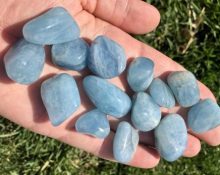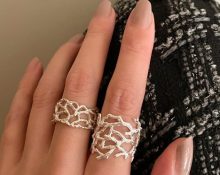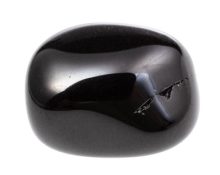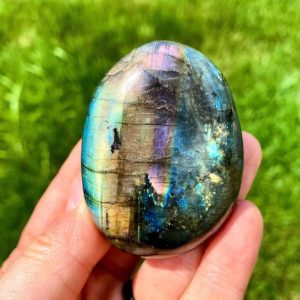
Labradorite is named after its location in Labrador, a Canadian province on Paul Island. The Inuit once called labradorite “firestone” and used powdered forms to treat illnesses. According to Inuit legend, one of the warriors saw that the Northern Lights were stuck in the stones and struck them with a spear to free some of the light.
The stone was first described by Moravian missionaries at the end of the eighteenth century, who introduced it to the European market. However, labradorite is not exclusive to Canada and can also be found in Mexico, Russia and Finland. Since its discovery, labradorite has been a highly sought after stone for use in jewelry. In addition to jewelry, labradorite is used in glass production, road construction and ceramics.
Metaphysical properties of labradorite
Labradorite is considered an extremely spiritual stone, especially beneficial for people prone to overwork.It helps a person to restore strength, and the body and spirit to heal. In the metaphysical world, labradorite is considered one of the most powerful protectors. This stone creates a shield for the aura and protects against the negativity of the surrounding world. It is believed that labradorite pacifies negativity in ourselves.
Labradorite is believed to stimulate the throat chakra. Although it is not associated with any zodiac sign, the sign of Cancer is supposed to be particularly drawn to labradorite.
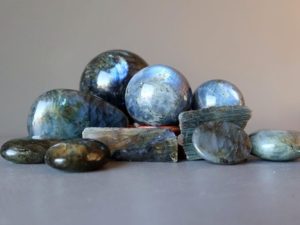
Geological properties of labradorite
The labradorite gemstone is a plagioclase mineral. Plagioclase minerals are feldspars that range from pure albite to pure anthorite. Labradorite gemstone falls into the category of 50-70% antorite with a structure of 50-70% calcium and 30-50% sodium. Labradorite is best known for its brilliant flashes of color called “labradorescence,” caused by plate-like iridescence within the crystal. These twin lamella structures are compatible at high temperatures but not at low temperatures, resulting in separation and layering when the gemstone is formed.
The additional colors you see in labradorite are caused by the refraction of light passing at different speeds through the layers and emerging as different wavelengths. A rare variety of labradorite, called spectrolite, exhibits a richer and more complete range of colors than most others.
Proper care of labradorite
Because labradorite has internal layers, it is susceptible to breaking when subjected to strong impact or extreme pressure. For this reason, many designers prefer to use labradorite in earrings and necklaces rather than bracelets and rings to avoid direct impacts.When cleaning Labradorite, it is best to use mild soap and water with a raw cloth. It is not recommended to use ultrasound, steam or boiling to clean labradorite. Store labradorite in a soft cloth to avoid surface scratches caused by harder materials.
To learn more about labradorite and other gemstones, order your copy of the revised and expanded edition of Walter Schumann's Gems of the World.
Jewelry design with labradorite
Labradorite cabochons are often set in open-back frames to allow light to illuminate their brilliant flare. Sterling silver or antique silver beads and settings are favorite metal tones to use with labradorite. Because the play of labradorite's color is more noticeable when light passes through the stone rather than when standing still, designers especially like to create drop earrings or beaded necklace pendants that move and catch the light.
To highlight the specific colors of labradorite stones, pair them with stones of the same color. If a large labradorite cabochon will be the centerpiece of the necklace and will have bright green flashes, use green colored stones such as light green prehnite, jade or emerald. To highlight blue flares, try using blue sapphire, aquamarine or apatite. Sparkling flashes of crystal also love to highlight the beauty of labradorite beads.


 0
0